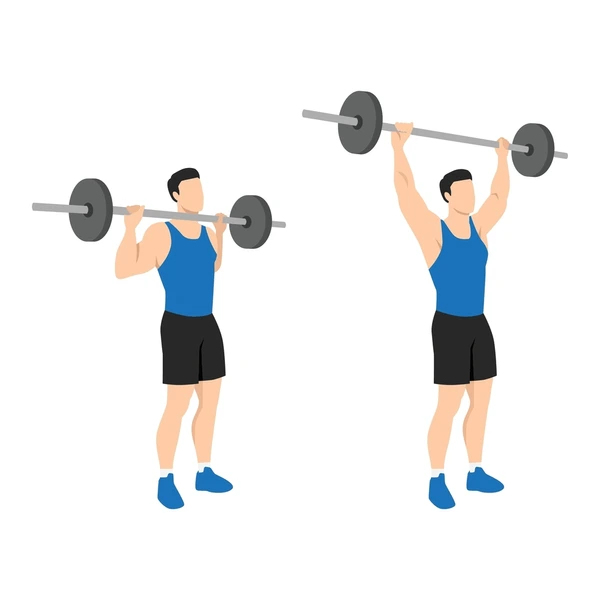A Comprehensive Guide For Shoulder Workout
Published On : 15th May 2025

When it comes to developing a well-rounded physique, strong and defined shoulders are a game-changer. Not only do they enhance your upper body aesthetics, but healthy shoulders also improve posture, athletic performance, and reduce injury risk.
Build Strength, Size, and Stability
This guide walks you through the importance, anatomy, key principles, and an effective workout plan for building stronger shoulders.
💡 Importance of Shoulder Workouts
Shoulder training is more than just building muscle for show—it’s foundational for overall upper body function and longevity in training. Here’s why shoulder workouts are essential:
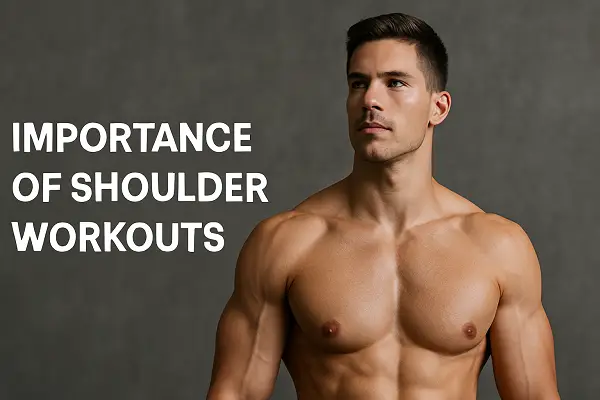
- Enhanced Aesthetics: Well-developed shoulders create the illusion of a wider upper body and smaller waist, contributing to a classic V-taper physique.
- Improved Posture: Strengthening the rear delts and stabilizers helps combat poor posture from sitting and screen time.
- Injury Prevention: Strong, balanced shoulders reduce the risk of common injuries like rotator cuff strains and impingements.
- Increased Upper Body Strength: Shoulders play a major role in pressing and lifting movements, such as bench press and push-ups.
- Better Athletic Performance: Sports like swimming, boxing, basketball, and CrossFit rely heavily on shoulder mobility and power.
- Support for Daily Activities: From lifting groceries to reaching overhead, strong shoulders make everyday tasks easier and safer.
Neglecting shoulder training can lead to weaknesses that limit progress in other exercises and make you more injury-prone over time.
🔍 Understanding Shoulder Anatomy
To build balanced shoulders, you need to target all three heads of the deltoid muscle:

- Anterior Deltoid (Front): Responsible for pushing movements like shoulder presses.
- Lateral Deltoid (Side): Gives shoulders their broad appearance; targeted by lateral raises.
- Posterior Deltoid (Rear): Important for posture and pulling movements like rows or reverse flys.
Neglecting any part can lead to muscular imbalances or poor shoulder mobility.
🏋️♂️ The Shoulder Workout Routine
Here’s a comprehensive workout to hit all angles of your shoulders. Do this routine 1-2 times per week:
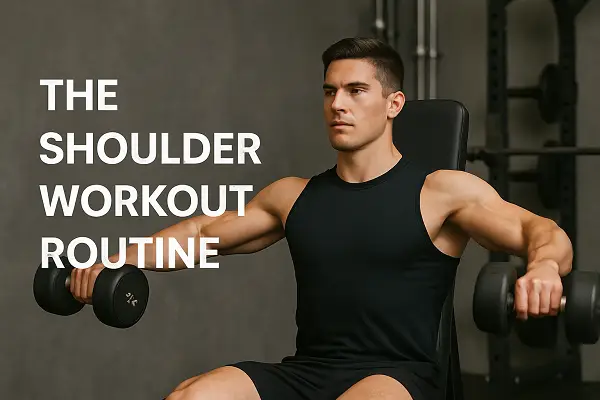
- Barbell Overhead Press (4 sets x 6–8 reps):
- Target: Anterior deltoids, triceps, upper traps
- How to Do It:
- Stand with feet shoulder-width apart and grip the barbell just outside your shoulders.
- Start with the bar at chest level, elbows slightly forward.
- Press the bar overhead in a straight line, locking out your arms without leaning back.
- Lower the bar under control to the starting position.
- Tip: Squeeze your glutes and brace your core to protect your lower back.
You can also refer to the help video below.
- Dumbbell Lateral Raise (3 sets x 12–15 reps):
- Target: Lateral deltoids
- How to Do It:
- Stand upright with a dumbbell in each hand, arms at your sides, palms facing in.
- With a slight bend in your elbows, lift the dumbbells out to the sides until they’re at shoulder height.
- Pause briefly, then lower back down slowly.
- Tip: Don’t swing your body—keep the motion controlled.
You can also refer to the help video below.
- Seated Arnold Press (3 sets x 8–10 reps):
- Target: All three deltoid heads
- How to Do It:
- Sit on a bench with back support, holding dumbbells in front of you at shoulder height, palms facing your body.
- As you press the weights up, rotate your palms to face forward.
- At the top, your arms should be fully extended overhead.
- Reverse the movement to return to the starting position.
- Tip: This twist engages more deltoid muscle fibers—don’t rush through the motion.
You can also refer to the help video below.
- Rear Delt Fly (3 sets x 12–15 reps):
- Target: Posterior deltoids
- How to Do It:
- Hinge at the hips with a straight back and dumbbells hanging down, palms facing each other.
- Raise the weights out to the sides, squeezing your shoulder blades together.
- Stop at shoulder height and return slowly.
- Tip: Keep your neck relaxed and avoid shrugging your shoulders.
You can also refer to the help video below.
- Face Pulls (3 sets x 15 reps):
- Target: Rear delts, rotator cuff, traps
- How to Do It:
- Attach a rope to a high pulley on a cable machine.
- Grip the ends of the rope with both hands, palms facing inward.
- Step back and pull the rope toward your forehead, flaring your elbows out.
- Squeeze your rear delts at the top, then return with control.
- Tip: Use light weight and perfect form—this is as much about shoulder health as muscle building.
You can also refer to the help video below.
- Dumbbell Front Raise (3 sets x 12–15 reps):
- Target: Anterior deltoids
- How to Do It:
- Hold dumbbells in front of your thighs, palms facing down.
- Lift both arms straight in front to shoulder height.
- Pause, then lower back down slowly.
- Tip: Avoid using momentum or swinging your torso.
You can also refer to the help video below.
- Upright Row (Barbell or EZ Bar) – 3 sets x 10–12 reps:
- Target: Lateral and upper traps, front deltoids
- How to Do It:
- Hold the barbell with a shoulder-width grip.
- Pull it up along your body until elbows reach shoulder height.
- Lower with control.
- Tip: Keep elbows higher than wrists to avoid shoulder impingement.
You can also refer to the help video below.
- Optional Finisher (Burnout Superset):
- Perform all 3 movements back-to-back for 2–3 rounds:
- Dumbbell Lateral Raise x 10
- Dumbbell Front Raise x 10
- Dumbbell Shoulder Press x 10
- Tip: Use light weights and minimal rest. Focus on time under tension.
🧠 Key Training Principles
Before jumping into workouts, keep these principles in mind:
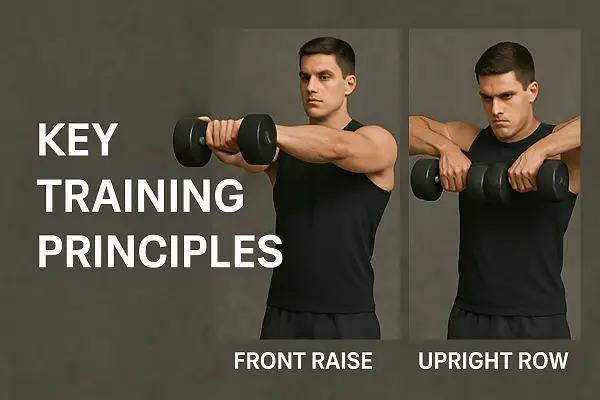
- Train All Heads Equally: Avoid overemphasis on front delts, which already get a lot of work from chest exercises.
- Use Proper Form: Shoulders are prone to injury. Use a full range of motion and control the weight.
- Prioritize Recovery: Shoulders are used in many upper body movements. Give them at least 48 hours before training again.
- Warm-Up Thoroughly: Include rotator cuff mobility and dynamic stretches before heavy lifting.
🥗 Nutrition & Recovery Tips

- Protein Intake: Aim for 0.8–1g per pound of body weight to support muscle growth.
- Hydration: Proper hydration aids joint health and workout performance.
- Sleep: At least 7–8 hours of quality sleep supports muscle repair and hormone balance.
🚫 Common Shoulder Training Mistakes
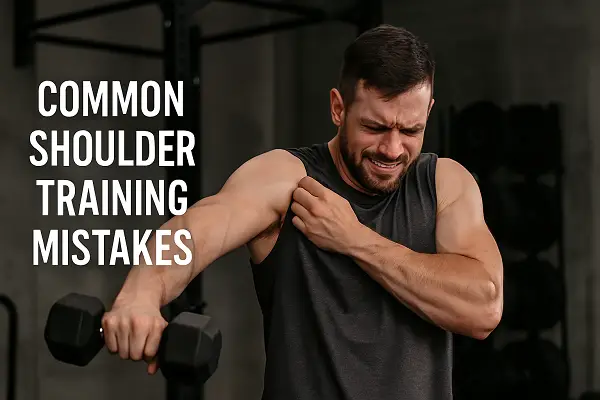
- Overtraining: More isn’t always better. Shoulders need rest.
- Neglecting Rear Delts: Leads to imbalance and poor posture.
- Poor Warm-Up: Skipping it increases injury risk.
- Lifting Too Heavy: Compromises form and limits range of motion.
Conclusion
Strong shoulders are essential for performance, aesthetics, and long-term joint health. By following a balanced approach that includes compound and isolation work, focusing on form, and giving your body the recovery it needs, you’ll be on your way to sculpting impressive shoulders.




